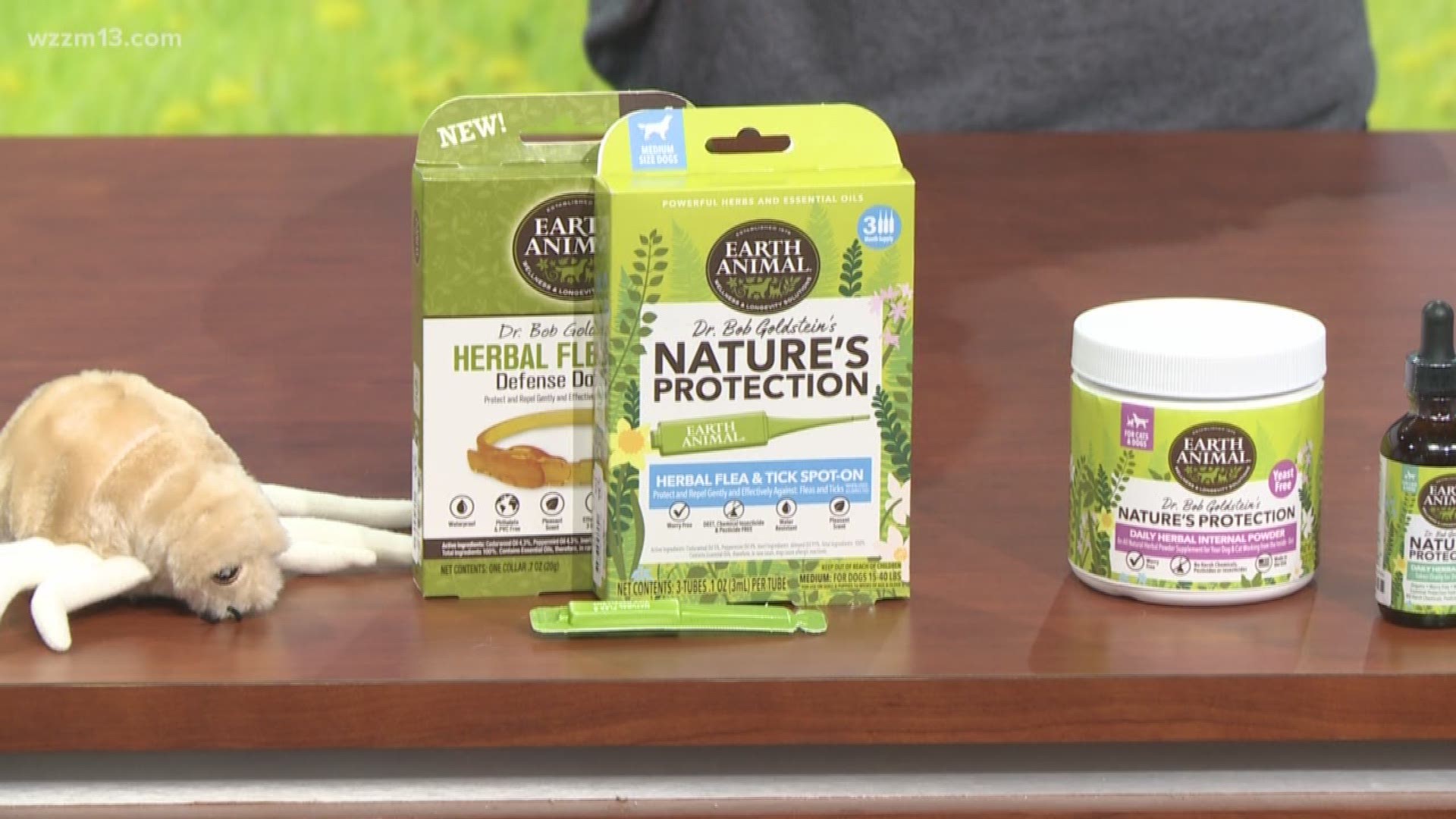GRAND RAPIDS, Mich. — What to do when your dog or cat gets bitten or stung? We hate to break it to you, but summer isn’t all beaches, BBQs and blue skies. Oh no, there are blood-sucking mosquitoes, bees that somehow acquired an affinity for picnic food and snakes that like to sun right by your favorite hiking trail. And, your four-legged friend takes just as much issue with those summer pests as you do. We hope you and yours steer clear of any run-ins, but if your cat or dog gets bitten by one of these guys, here’s what to do.
Mosquitoes
The biggest threat from mosquitoes is heartworm disease. These parasites are transmitted as larvae via a mosquito bite and infiltrate your pet’s blood system to take residence, grow and multiply in the heart and lungs, causing major damage and death. If infested, your pet may show no early signs, but as the disease progresses, your pet could exhibit coughing, abnormal fatigue, loss of appetite and weight loss. Signs of disease don’t show up until the later stages and are very difficult to treat later in the disease process. If detected, early treatment can increase the likelihood of a full recovery. There is no treatment for cats, so using a preventative is crucial (ask your family veterinarian for medication). Dogs should be given a monthly heartworm preventative and then tested for heartworm disease at least annually, usually as a part of a routine check-up.
Ticks
Besides the “yuck!” factor, ticks are dangerous because they can spread so many diseases to your pet, including Lyme disease. Ticks like to hang out in wooded areas and near tall grasses and brush. And, one or more species now live in every state (but they are especially prominent in warm climates and wooded regions in the northeast). Be sure to regularly check your dog after hikes and also if your cat or dog has been outside exploring your backyard or other areas where you might find ticks. If you find a tick, you can remove it (here’s how to check your pet and remove a tick). Since there are several diseases a tick could pass on to your pet, symptoms of tick-borne diseases can vary greatly but often start with lethargy and lack of appetite. It’s best to follow up with your family veterinarian after removing one from your pet. Your pet may need a blood test to see if any disease has been transmitted and/or treatment with antibiotics. The key to treating tick-borne diseases is early detection and/or prevention. We recommend using a monthly tick treatment as a preventative. Please consult your family veterinarian for the best product for your pet.
RELATED: Get your pets ready for the warmer weather
RELATED: Spoiling our pets for National Pet Month
Spiders
Beware of black widow and brown recluse spiders – their bites are poisonous! The parts of your pet’s body not covered by a thick coat of hair, such as the earflaps, nose and lips, are especially vulnerable to bites. In these areas, you may see redness and swelling, and your pet may scratch or lick the site. If your dog or cat cries out when touched, doesn’t want to move or eat, or starts to shake or pant, take your pet to your family veterinarian or an emergency pet hospital right away. You might also notice, over the course of several days, skin around the site blistering, reddening or turning black. This could indicate toxins from a brown recluse spider bite causing the tissue to die. This also requires immediate medical attention. Treatments include fluids, pain medication, antibiotics and/or steroids.
Bees
Your pup or cat might let out a yelp if they get stung by a bee. Whether they do or not, you can look for swelling, redness and itching where you think it happened. If you find the stinger, scrape it out with a credit card. If you decide to use tweezers to pull it out instead, be sure not to push on the venom sac, which is located just above the stinger. That will force more venom into your pet. You can also apply a cool compress to the irritated area and a mixture of baking soda and water to neutralize some of the venom. Like humans, pets can also experience an allergic reaction resulting in hives, facial swelling and difficulty breathing. If you see those symptoms, rush your pet to your family veterinarian or an emergency pet hospital.
Snakes
The most common poisonous snakes in the U.S. are rattlesnakes, copperheads, water moccasins and coral snakes. Maybe you saw your cat or dog being bitten by one of these or a non-venomous snake (scary!) or just suspect that your pet was attacked. If the snake is still in the area, try to get a picture, as treatment varies depending on the type of snake.
Although they can be bitten anywhere, pets are more likely to take the attack on their muzzle or limbs. A pet bitten by a snake may show signs right away, or sometimes hours later, and may feel extreme pain at the wound site. You may see swelling and puncture marks, and your pet may also be weak, breathing rapidly, drooling or vomiting. If possible, carry your pet to the car and proceed directly to your family veterinarian or an emergency pet hospital. But use caution when handling your pet since your cat or dog may be in severe pain and may unexpectedly lash out.
Though we would love to keep our pets away from all harm, preventing bites and stings is not always possible. That’s why it’s best to keep the phone number and address of a pet emergency hospital handy – on your fridge, in your wallet or purse, in your car’s dashboard compartment or on your phone – just in case your furry friend needs quick medical attention.
RELATED VIDEO:
►Make it easy to keep up to date with more stories like this. Download the 13 ON YOUR SIDE app now.
Have a news tip? Email news@13onyourside.com, visit our Facebook page or Twitter.


